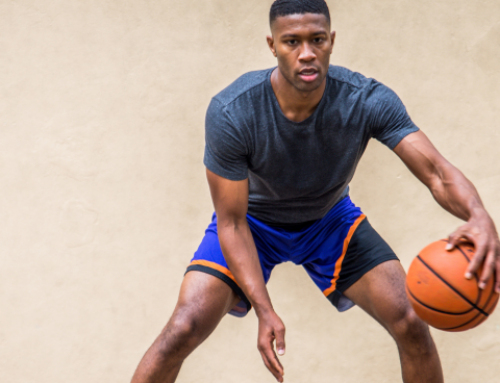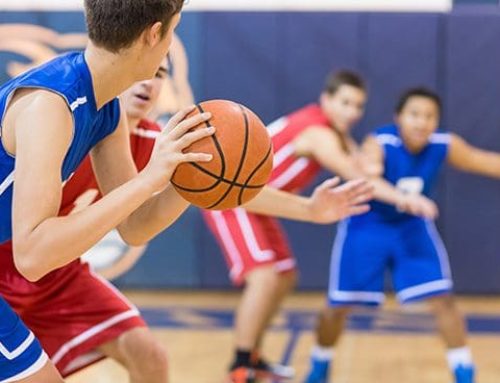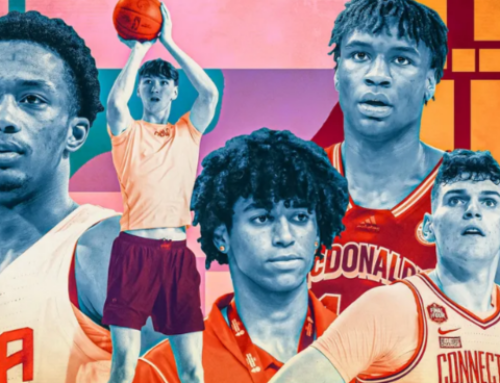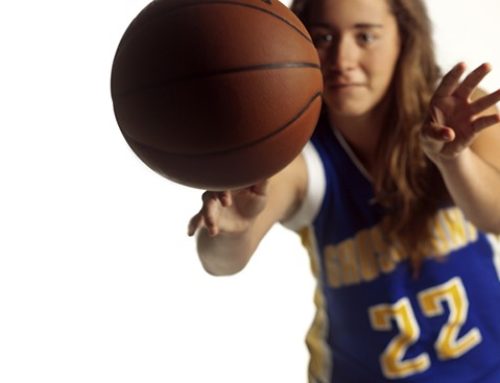Basketball Positions – EXPLAINED
Insider tip: Consider positionless basketball.
Can your tallest player box out and rebound well? Great! Put them at center.
A player who is a great leader and has ball-handling skills? Try point guard.
Positions on the basketball court have traditionally been determined by both a player’s skills and height. Easy, right? Coaches can just use a checklist of skills and sizes, and boom, you have your player’s positions figured out.
Well, not so fast. In the past five years, positions have become more blurred and less defined at every level of the sport. In the NBA, there is a (growing) appreciation for players who can play anywhere on the court. See: Lebron James.
This is called positionless basketball. And coaches at every level should understand it and use it as one measure of their players’ development. As Jeremiah Boswell, a consultant in youth development for the NBA says, positionless basketball means players “have to be more skilled, more well-rounded,” and offers that positionless basketball is excellent for youth development.
More on that in a moment.
The 5 basic basketball positions
It’s still important to know and teach youth basketball players positions – their locations and jobs on the court.
There are five players on the court at a time, and they can be in any of the following positions: point guard, shooting guard, small forward, power forward and center.
Point guards are players who are more comfortable with the ball and who exhibit leadership skills. Traditionally, point guards are the team’s best dribbler and passer on offense, and capable of defending opponents with quick footwork and agility.
A shooting guard is similar to a point guard in comfort with the ball and leadership skills, but they have the added dimension of a strong perimeter shot.
Small forwards can go all over the court, scoring from inside and outside the paint and perimeter. They also help the power forward and center with rebounding, and possess quick feet and speed for fast breaks.
A power forward stays closer to the basket to help rebound and defend taller players, while also looking for opportunities to cut for a longer shot. They must be able to drive to the basket, attempting to score on their own or draw defense for the quick pass.
Centers are traditionally the tallest player and are positioned closest to the basket. They score on close shots and focus on rebounds, both offensive and defensive. They need to have great agility, strong upper body strength and confident hands.
Why is positionless basketball a thing?
Teaching youth players basketball without an emphasis on positions helps them develop a basketball IQ, or a sense for the game. It also offers opportunities to develop all of the fundamental skills of the sport – dribbling, passing, shooting, cutting, boxing out, rebounding – to every player, regardless of size or body type.
As Boswell says, positionless basketball is great for youth, “because you learn how to do everything at every space on the floor.” It’s about teaching concepts, he says, rather than specific roles or jobs.
For example, helping every player learn how to pass the ball and cut is way better, long-term, than just telling them to follow a play, cutting from point A to point B. Boswell offers that positionless basketball is more improvisational, more like jazz (not the Utah Jazz, to be clear), which is harder to defend and allows players more creative freedom.
The best way to offer this kind of positionless experience for you players? Through games where, for example, every player gets to practice shooting from all over the court. Or, in an activity where every player practices handling the ball.
After all, in the words of John Wooden, “It’s not how big you are, it’s how big you play.”
Read the original article on mojo.com
About MOJO
MOJO is on a mission to make youth sports more fun for everyone — one kid, one coach, one family at a time. Launched in February 2021, MOJO is a robust digital platform that empowers parents who coach youth sports to bring world-class training to the largest pool of players in the world — kids aged 13 and under. MOJO believes that youth sports has the power to transform lives, not just for the kids on the field but the coaches and parents on the sidelines. MOJO is committed to equity, inclusion and helping level the playing field for kids everywhere. For more information, visit www.mojo.sport. MOJO can also be found on Facebook, Twitter, and Instagram.
RECOMMENDED FOR YOU
MOST POPULAR
Basketball Positions – EXPLAINED
Insider tip: Consider positionless basketball.
Can your tallest player box out and rebound well? Great! Put them at center.
A player who is a great leader and has ball-handling skills? Try point guard.
Positions on the basketball court have traditionally been determined by both a player’s skills and height. Easy, right? Coaches can just use a checklist of skills and sizes, and boom, you have your player’s positions figured out.
Well, not so fast. In the past five years, positions have become more blurred and less defined at every level of the sport. In the NBA, there is a (growing) appreciation for players who can play anywhere on the court. See: Lebron James.
This is called positionless basketball. And coaches at every level should understand it and use it as one measure of their players’ development. As Jeremiah Boswell, a consultant in youth development for the NBA says, positionless basketball means players “have to be more skilled, more well-rounded,” and offers that positionless basketball is excellent for youth development.
More on that in a moment.
The 5 basic basketball positions
It’s still important to know and teach youth basketball players positions – their locations and jobs on the court.
There are five players on the court at a time, and they can be in any of the following positions: point guard, shooting guard, small forward, power forward and center.
Point guards are players who are more comfortable with the ball and who exhibit leadership skills. Traditionally, point guards are the team’s best dribbler and passer on offense, and capable of defending opponents with quick footwork and agility.
A shooting guard is similar to a point guard in comfort with the ball and leadership skills, but they have the added dimension of a strong perimeter shot.
Small forwards can go all over the court, scoring from inside and outside the paint and perimeter. They also help the power forward and center with rebounding, and possess quick feet and speed for fast breaks.
A power forward stays closer to the basket to help rebound and defend taller players, while also looking for opportunities to cut for a longer shot. They must be able to drive to the basket, attempting to score on their own or draw defense for the quick pass.
Centers are traditionally the tallest player and are positioned closest to the basket. They score on close shots and focus on rebounds, both offensive and defensive. They need to have great agility, strong upper body strength and confident hands.
Why is positionless basketball a thing?
Teaching youth players basketball without an emphasis on positions helps them develop a basketball IQ, or a sense for the game. It also offers opportunities to develop all of the fundamental skills of the sport – dribbling, passing, shooting, cutting, boxing out, rebounding – to every player, regardless of size or body type.
As Boswell says, positionless basketball is great for youth, “because you learn how to do everything at every space on the floor.” It’s about teaching concepts, he says, rather than specific roles or jobs.
For example, helping every player learn how to pass the ball and cut is way better, long-term, than just telling them to follow a play, cutting from point A to point B. Boswell offers that positionless basketball is more improvisational, more like jazz (not the Utah Jazz, to be clear), which is harder to defend and allows players more creative freedom.
The best way to offer this kind of positionless experience for you players? Through games where, for example, every player gets to practice shooting from all over the court. Or, in an activity where every player practices handling the ball.
After all, in the words of John Wooden, “It’s not how big you are, it’s how big you play.”
Read the original article on mojo.com
About MOJO
MOJO is on a mission to make youth sports more fun for everyone — one kid, one coach, one family at a time. Launched in February 2021, MOJO is a robust digital platform that empowers parents who coach youth sports to bring world-class training to the largest pool of players in the world — kids aged 13 and under. MOJO believes that youth sports has the power to transform lives, not just for the kids on the field but the coaches and parents on the sidelines. MOJO is committed to equity, inclusion and helping level the playing field for kids everywhere. For more information, visit www.mojo.sport. MOJO can also be found on Facebook, Twitter, and Instagram.










